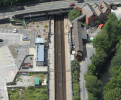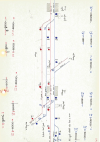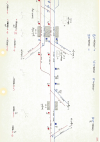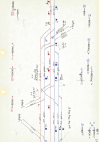Mod Note: Posts #1 - #14 originally in this thread.
Rationalisation is something that shouldn't be countenanced lightly. We all have examples rationalisations from the 1980's that are still causing problems today. My own favourite is the de-quadroupling of track between Guide Bridge and Manchester Piccadilly which must have only happened a few years before the Windsor link made it a main line, and which means that to this day trans pennine express services have to crawl along behind the Glossop stopper.
The real challenge is to prevent "rationalisation" turning into wholesale closure.
Rationalisation does not just mean "axe duplications" - it can involve spending significant amounts of money to enable long term savings.
The Hazel Grove chord being an obvious historical example.
Rationalisation is something that shouldn't be countenanced lightly. We all have examples rationalisations from the 1980's that are still causing problems today. My own favourite is the de-quadroupling of track between Guide Bridge and Manchester Piccadilly which must have only happened a few years before the Windsor link made it a main line, and which means that to this day trans pennine express services have to crawl along behind the Glossop stopper.




